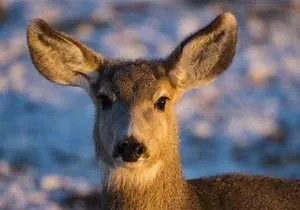During winters with deep snow, deer and elk will look for easy sources of food and unprotected hay stacks are an attractant, explained Chris Kloster, game damage coordinator for Colorado Parks and Wildlife. If haystacks are poorly protected the animals can quickly get to hay and consume large amounts.
For deer, hay is also a killer. Because their digestive system is not equipped to break down hay, deer can die from consuming it. It’s common for deer to die from a malady called acidosis when they eat hay.
Elk, however, can safely consume hay, so they’ll always come back for more.
“Hay stacks can be protected with proper fencing,” Kloster said. “But folks should start planning the work well before the snow starts falling.”
The winter of 2016-17 brought substantial snowfall to western Colorado and hay stacks were damaged throughout the region. Protecting stacks should be done by anyone who uses hay – from ranchers to backyard hobbyists.
In the Gunnison area last year, which received above average snowfall, deer and elk were able to find small stacks of hay in rural subdivisions. Many of the deer that ate from those haystacks died as a result.
“Once animals find a source of food they’re not going to stop going to that source until it is secured,” Kloster said.
During tough winters, some people intentionally put out hay or pet food believing they are helping wildlife. But that type of food is not healthy for wildlife and can kill them.
The best materials to use are stout wooden posts and woven wire. Because snow can build up, fences should be built 7-8 feet high.
If you’d like information about how to protect your hay crop, please contact your local CPW service center.




